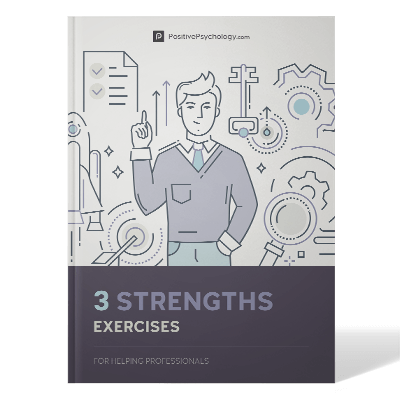11+ Honesty Worksheets & Tests for Adults (+ PDF)

“Honesty is the best policy.”
– Benjamin Franklin
Or is it?
Benjamin Franklin seems to think so, but he also said this:
“Remember not only to say the right thing in the right place, but far more difficult still, to leave unsaid the wrong thing at the tempting moment.”
Benjamin Franklin
Now, the “wrong thing” referred to in this quote may sometimes be a lie, but the wise Franklin also knew that telling the truth with no filter is a practice that is sure to end in pain—for you, for another, or for all those involved!
So, is honesty always the best policy? When would it not be the best policy? These are questions many people have asked over countless years.
As such, there are a lot of different ideas about what honesty is, the morality of honesty vs. lying, and how honest one should really be in practice. Some people endorse little white lies, while others condemn them. Some say that lying is fine if it protects an innocent person, while others believe there is never a good reason to lie. It can be tough to navigate between all of these contrasting ideas about honesty.
For this piece, we delved into the theories and philosophies behind honesty and gathered some of the best resources for teaching and encouraging this character trait. Hopefully, this information will help you figure out where you stand on this interesting subject, and what kind of honesty you would like to strive for!
Before you continue, we thought you might like to download our three Strengths Exercises for free. These detailed, science-based exercises will help you or your clients realize your unique potential and create a life that feels energized and authentic.
This Article Contains:
- Definition & Meaning of Honesty
- Theory: Radical Honesty and More
- Assessing Honesty: Test and Scale
- Teaching Honesty & Integrity: Examples, Stories, Quotes & Songs
- 3 Honesty Worksheets (PDF) for Adults
- 5 Honesty Activities for Children & Teens
- 3 Honesty Worksheets (PDF) for Children & Teens
- A Take-Home Message
- References
Definition & Meaning of Honesty
Honesty is more than not lying. It is truth telling, truth speaking, truth living, and truth loving.
James E. Faust
What is honesty?
The answer you get to this question will depend on who you ask.
There is a general understanding of what honesty is in society, but there’s plenty of room to dive into what really constitutes honesty.
To some, honesty may be defined by its synonyms, such as fairness, straightforwardness, sincerity, integrity, or trustworthiness (“Honesty”, 2016).
To others, honesty may be “speaking the truth and abiding by the rules” (Borghini, 207).
To others still, the definition of honesty may be “never faking reality in order to gain a value” (Biddle, 2013).
Honesty can be understood as an act (e.g., speaking the truth, refusing to lie), a trait (e.g., authenticity), and a disposition (e.g., tendency or habit to be forthcoming with relevant truths), among other things.
However you conceptualize honesty, you likely agree that at least some level of honesty is an important trait to cultivate. Being honest with others is essential for creating and maintaining healthy relationships, and being honest with yourself is vital for personal development and growth, as well as self-acceptance and self-esteem (Durham, 2017).
Theory: Radical Honesty and More
Honest is the fastest way to prevent a mistake from turning into a failure.
James Altucher
Since it’s difficult to reach unanimous agreement on the very definition of honesty, it should come as no surprise that there are many theories and philosophies on honesty. These theories pose and answer questions like:
- What does it mean to be honest?
- How important is honesty?
- Is it immoral to be dishonest?
- Is dishonesty every acceptable?
As with any other complex and significant topic, people have come up with a wide variety of responses to these questions, some of which are diametrically opposed to others.
To give you an idea of the spectrum across which these theories fall, three will be presented: one at or near each end of the spectrum, and one that lies somewhere in the middle. Think of the spectrum as “absolute honesty” at the left end and “absolute dishonesty” at the right end, something like this:
Absolute Honesty <———————————- Mixed ———————————-> Absolute Dishonesty
Radical Honesty
Although most people agree that honesty is at least somewhat important, there is a group that places a great deal of importance on being honest—not just mostly honest, but completely honest at all times and in all interactions—with one important exception (Jacobs, 2007). These people would be placed near the extreme “always tell the truth” end of the spectrum.
This total honesty is the referred to as “radical honesty.” Those who dedicate themselves to radical honesty commit to removing all lies, both big and small, from their interactions with others. This total honesty is adopted with the hopes of improving their relationships with friends, family, and romantic partners, as well as an overall boost to quality of life.
As mentioned earlier, practitioners of radical honesty make only one exception to their commitment to total honesty—when telling the truth would result in terrible consequences for someone who does not deserve it (think lying to the Nazis to protect Anne Frank and her family).
With this exception, those who subscribe to radical honesty avoid the absolute extreme “truth” end of the spectrum; the only people to the left of the radical honesty folks are those who are known as “deontologists.”
Deontologists subscribe to the idea that every act is either right or wrong, regardless of its consequences (“Lying”, 2014). Lying is always wrong, therefore even lying with the best of intentions is still wrong. Radical honesty might not seem quite as radical in comparison to these rigid truth-tellers!
To learn more about radical honesty, visit the website at http://radicalhonesty.com/. You can also hear about the life-enhancing potential of practicing radical honesty straight from Dr. Blanton, the founder of the radical honesty approach, in this TEDx Talk.
Utilitarian View on Honesty
Utilitarians, also known as consequentialists, generally see lying and dishonesty as immoral and unacceptable; however, they see honesty and dishonesty as a problem with shades of gray rather than a thick line differentiating black from white (“Lying”, 2014).
Those who subscribe to utilitarianism assess the “rightness” or “wrongness” of an action by considering the consequences of the action; if something good comes out of an action, it is probably right, while an action that produces bad or harmful results is likely wrong.
Some utilitarians judge each potential lie separately, evaluating the expected consequences of the act and determining its rightness or wrongness independently of any other lies. Others might follow a set of rules to help them determine when a lie is right and when it is wrong, rather than considering each case separately.
The main thing that separates utilitarians from each end of the spectrum is the belief that sometimes it is right to tell the truth, and sometimes it is right to lie.
Ethical Egoism
Now that we’ve explored the left end of the spectrum and the middle point of the spectrum, let’s turn our focus to the right end.
Those towards the “dishonest” end of the spectrum have a different view on honesty altogether—namely, they don’t believe honesty has any inherent morality. Utilitarians may justify lying in some cases, but justification requires expectations that the good that comes out of lying will outweigh the inherent “wrongness” of lying.
Ethical egoists have no such qualms with determining the rightness or wrongness of dishonesty; in their view, honesty is not automatically good and dishonesty is not automatically bad (Moseley, n.d.).
The only measure of whether something is “good” or “bad,” “right” or “wrong,” is whether it contributes to one’s own self-interest. Therefore, if telling a lie gets you ahead, it is the right thing to do. If telling the truth hinders you, it is the wrong thing to do.
Unsurprisingly, not many people openly adhere to this philosophy of honesty, although it’s worth noting how often we see examples of this philosophy in action.
Although there are clearly many ways to approach honesty, it’s necessary to settle on a general idea of meaning. For the purposes of this article, we’ll go with a fairly generic, but unobjectionable, idea of honesty to mean being:
- Genuine
- Authentic
- True (Durham, 2017)
Assessing Honesty: Test and Scale
Now that we’ve decided what honesty is, we come to another important question: How do we measure or assess honesty?
What criteria should we use to determine whether someone is honest or not? How do we know if someone is committed to or complacent about honesty?
There are a few ways to assess honesty and/or beliefs about honesty. We’ll cover the most widely used ones below.
General Trust Scale
The General Trust Scale was developed by researchers Yamagashi and Yamagashi in 1994. This scale will not provide an answer about how honest or trustworthy the respondent is, but it will provide other valuable information—how trustworthy they find others, which is an important insight into their own relationship with honesty.
This scale includes only six items, scored on a scale from 1 (Strongly Disagree) to 5 (Strongly Agree). The six items are as follows:
- Most people are basically honest.
- Most people are trustworthy.
- Most people are basically good and kind.
- Most people are trustful of others.
- I am trustful.
- Most people will respond in kind when they are trusted by others.
A person’s responses to these items are averaged to produce a general score (between 1 and 5) of his or her belief in the honesty and trustworthiness of others.
Trust in People Scale
Similar to the General Trust Scale, the Trust in People Scale provides a measure of the respondent’s general level of trust towards other people (1964 Election Study). It was first established in a 1964 post-election study, and it has been used in national surveys ever since.
There are only three items, and each presents only two options: a high trust option and a low trust option. The items and their response options are as follows:
- Generally speaking, would you say that most people can be trusted or that you can’t be too careful in dealing with people?
a. Most people can be trusted
b. Can’t be too careful - Would you say that most of the time, people try to be helpful, or that they are mostly just looking out for themselves?
a. Try to be helpful
b. Look out for themselves - Do you think that most people would try to be fair or take advantage of you if they got the chance?
a. Try to be fair
b. Take advantage
For each question, option a is the high-trust option and option b is the low-trust option. The high-trust option is worth one point, while the low-trust option is worth zero points. To produce a score of trust in people, sum the points for each question. The score will be between 0 and 3, with 3 representing the highest level of trust in others and 0 representing the lowest level of trust in others.
HEXACO Personality Inventory-Revised
Unlike the previous two scales, this scale will provide an assessment of the respondent’s own honesty rather than their sense of the honesty of others.
The HEXACO model is quite similar to the Big Five model of personality, although it adds one factor and differs slightly on the other factors.
The Big Five factors are:
- Openness to Experience
- Conscientiousness
- Extroversion
- Agreeableness
- Neuroticism
The HEXACO factors include:
- Honesty-Humility
- Emotionality (analogous to Big Five’s Neuroticism)
- Extroversion
- Agreeableness (vs. Anger)
- Conscientiousness
- Openness to Experience (Lee & Ashton, 2009)
In case you’re not familiar with the Big Five factors, we’ll go over them briefly before covering the added factor in the HEXACO model.
Openness to experience can be understood as the personality factor that determines how open and accepting a person is of new experiences, bold thinking, and being vulnerable with others.
Conscientiousness refers to a person’s tendency towards controlling their impulses and acting in socially acceptable ways.
Extroversion is a widely known factor that has an equally well-known flipside: introversion. Extroversion (vs. introversion) concerns a person’s source of energy; extroverts derive energy from interacting with others, while introverts recharge when they are alone.
Agreeableness is generally understood as to how well a person gets along with others, or how easily they interact successfully with others.
Neuroticism (or Emotionality) refers to a person’s general sense of self-esteem, self-confidence, and emotional stability.
Finally, the factor that you are probably not so familiar with is the Honesty-Humility factor. This factor covers the respondent’s willingness to manipulate others for personal gain, a tendency towards breaking the rules, or a sense of entitlement. Those who score high in this factor are more inclined to be honest and humble, while those low in this factor are likely to show less concern for truth and modesty.
The HEXACO Personality Inventory-Revised, or HEXACO PI-R, includes 100 items and produces a score for each of the six personality factors. Items are rated by respondents on a scale from 1 (strongly disagree) to 5 (strongly agree). Respondents are instructed to provide an answer for each item, even if they are not entirely sure of their answer.
Each item corresponds to one of the factors. We’d rather not inundate you with items, so we’ll simply provide a sample item from each factor for you to look over:
Honesty-Humility Factor
“If I want something from a person I dislike, I will act very nicely toward that person in order to get it.”
Emotionality Factor
“When I suffer from a painful experience, I need someone to make me feel comfortable.”
Extroversion Factor
“In social situations, I’m usually the one who makes the first move.”
Agreeableness Factor
“I am usually quite flexible in my opinions when people disagree with me.”
Conscientiousness Factor
“I make decisions based on the feeling of the moment rather than on careful thought.”
Openness to Experience Factor
“I’m interested in learning about the history and politics of other countries.”
As you may have noticed when considering the sample conscientiousness item, some items are reverse-scored. Once the proper items have been reverse-scored, take the average of all items per factor to produce an overall score for each factor. Higher scores indicate a greater tendency towards each personality trait, while lower scores indicate greater levels of each trait’s opposite.
To learn more about the HEXACO PI-R, visit the website.
Teaching Honesty & Integrity: Examples, Stories, Quotes & Songs
No legacy is so rich as honesty.
William Shakespeare
Now that we have a good understanding of what honesty is and how we can measure it as a personality trait, we can move on to the next important question: How do we teach it?
Ask any teacher and he or she will tell you that teaching character traits is difficult! It’s not as easy as teaching grammar, arithmetic, or history, but it is certainly not impossible. There are many strategies, tips, and suggestions for teaching a character trait like honesty.
Parenting expert Joanne Stern provides three good guidelines to follow when teaching your children honesty (2011):
- Talk with your children, early and often, about the value of honesty.
- Model honesty for your children, through your words and your actions.
- Focus more on encouraging and appreciating honesty than on punishing dishonesty.
Once your kids reach an age at which they can tell the difference between telling the truth and telling a lie, you can begin instilling the value of honesty. They may not completely understand the value of honesty yet, but they can learn that they are expected to tell the truth and that they must face the consequences if they do not.
Follow these tips to help your child learn to be honest:
- Avoid labels. Don’t call your child a liar.
- Don’t ask questions when you already know the answer; this will only set them up to lie.
- Work with your child to reduce any unnecessary stress that may be weighing them down and encouraging them to lie.
- Avoid emphasizing bad behavior; try to bring up your child’s good behavior rather than their bad behavior.
- Find out why your child is fibbing; there may be important reasons that you don’t know about.
- Praise truth-telling instead of just punishing dishonesty.
- Don’t forget “little white lies.” Encourage your child to be honest, but not brutally and unnecessarily honest.
- Teach your child that lying doesn’t work; it’s never a good way to get what you want.
- Keep your cool—don’t overreact or yell if your child lies.
- Set a good example. The best way to teach honesty is to be honest (VanClay, 2017).
While these tips and suggestions are meant for parents, many of them can also be practiced by teachers and other caretakers as well. In addition, there are many other strategies for teaching honesty.
Stories
Stories are an excellent way to teach children honesty. There are some classic stories that can be used to encourage truth-telling, such as The Boy Who Cried Wolf.
In this short story, a boy comes up with a story about a wolf trying to eat his sheep. He receives a lot of attention from others but is ultimately found out. Later, a wolf actually shows up to take his sheep, but nobody believes him because he lied about it before. This story not only encourages children to tell the truth but shows them why lying may backfire!
The Honest Woodcutter is another good story for teaching that honesty can come with its own rewards. It describes a poor woodcutter who loses his axe in the river. He’s very upset because he has no money to buy a new one. Suddenly, a fairy appears in the river and presents a golden axe, saying “I found this axe in the river; is it yours?”
The woodcutter answers honestly, saying the axe is not his. The fairy then presents him with a silver axe, but the woodcutter again tells the fairy that this was not his axe. When the fairy presents him with his own wood axe, he replies that it is his, and thanks the fairy for giving him his axe. The fairy, seeing that the man is so honest, gives him all three axes as a reward.
For more ideas on stories, you can use to teach honesty and other character traits, follow this link.
Along with these stories, you can come up with your own, personalized stories for encouraging honesty in children you teach or take care of.
Books
In addition to stories, there are many books that can be used to teach honesty. Some books you will need to read with your child, and others your child may be able to read on his or her own.
A few good examples are:
- Sam Tells Stories by Thierry Robberecht
- The Honest-to-Goodness Truth by Patricia McKissack
- Liar, Liar, Pants on Fire by Diane deGroat
- The Boy Who Cried Bigfoot by Scott Magoon
- Little Croc’s Purse by Lizzie Findlay
For more suggestions on books that encourage honesty in children, click here.
Quotes
For older children in particular, sometimes a good quote can help them understand the importance of honesty in a way that they hadn’t understood before.
Try sharing these quotes with the children you teach or care for, and discuss what they mean.
If you tell the truth you don’t have to remember anything.
Mark Twain
This quote shows that it may actually be easier to tell the truth than to lie.
Make yourself an honest man, and then you may be sure there is one less rascal in the world.
Thomas Carlyle
Use this quote to emphasize that being honest is not only important on an individual level but contributes to a better and more honest society.
A half truth is a whole lie.
Yiddish Proverb
This quote serves to underscore that leaving out important details can be considered a lie, even if you offer parts of the truth.
When you stretch the truth, watch out for the snapback.
Bill Copeland
This quote can be used to let children know that, in addition to being wrong, lying can also have some very negative unintended consequences.
Songs
If your child is more of an auditory learner, try one of these fun songs about the importance of honesty.
Truth Song (Honesty Song)
All About Honesty
Honesty (for Kindergarteners)
3 Honesty Worksheets (PDF) for Adults

Spotting Good Traits
This worksheet is intended to help the user identify specific traits, but you could also begin with a specific trait (i.e., honesty) and work your way from there.
The worksheet lists 7 questions for you to answer:
- Name a favorite person or leader who demonstrates great character.
- What character traits does this person have?
- How does this person show these character traits?
- What character traits are most important for good leaders to have? Why?
- What character trait do you need to work on most? How will you develop it?
- List a trait, then how the trait is demonstrated.
- Make a poem, song, poster, or story about the importance of good character.
Instead of answering the first question then moving on to the second, identify honesty as the answer to the second question and then identify a leader that displays honesty.
The worksheet was designed for children and adolescents, but adults will certainly find valuable insight through completing this worksheet as well.
Download the Spotting Good Traits worksheet.
Using “I” Statements
Honest communication can often go out the window when we’re feeling blamed, guilty, or defensive. It’s easy to say things we regret and don’t truly mean when emotions are high, but “I” statements can be an alternative, healthier, and more positive way to express ourselves.
This sheet provides a simple formula for “I” statements, as well as examples of how they are used.
These assertive, honest sentence stems can be used to express how you feel while highlighting the specifics of a challenge that you’d like to address.
For example, “You upset me when…” might become “I feel upset when…”
Using “I” Statements includes example situations that you can use to practice creating your own “I” sentences.
Try out the I-Statements exercise.
Valued Living Questionnaire
As a VIA character strength, honesty falls within the Courage virtue category. Alongside speaking and the truth and acting with integrity, it’s described as:
“Present[ing] yourself in a genuine and sincere way, without pretense, and taking responsibility for your feelings and actions.”
The Valued Living Questionnaire, available as a tool in the Positive Psychology Toolkit©, is designed for any character strength (or strengths) that you consider important, but it can easily be applied to honesty alone.
This Toolkit assessment can be used to gauge the extent to which you live in line with honesty as a value.
It can provide some useful insights into how you might increase your commitment to living honestly and is a great way to set some objectives within this larger goal and measure your progress over time
The questionnaire considers different life domains in which you can live with honesty, such as in your marriage or intimate relationship, at work, and with friends.
5 Honesty Activities for Children & Teens

Below, several effective activities are listed that can be successfully applied in classrooms, small groups, and even at home. If you’re interested in seeing more honesty activities, quotes, and questions scroll to the second page of this honesty worksheet.
Role-Play
In a group of children, select two people to play a part in a role-play.
The first person will role-play a pie salesperson who is dishonest. They will try to make a big impression on the listeners, with exaggerated claims about the pie they are selling.
The second person will also role-play a pie salesperson, but one who is honest instead. They will tell the truth about their pie without exaggerating or sidestepping inconvenient facts.
The group should watch and listen carefully, and prepare to discuss after the role-plays are finished.
Finally, an adult will guide the group through a discussion of the differences between the two salespeople, and what it was like listening to each. The group will likely agree that the second salesperson seemed more trustworthy and that they would like to buy a pie from this person rather than the first salesperson.
Virtues Sharing Circle
This is a great activity for children that may be shy speaking in groups. It’s also a good way to connect personal experience with the practice of being honest.
Break the group into pairs, and have each pair sit together, apart from the other children.
One partner should begin by sharing a time when he did not practice honesty, and how it felt. Next, he should share a time he did practice honesty, and how that felt.
The second partner should listen attentively and acknowledge the virtue displayed by the other person in their honesty story.
When the first partner has shared both stories, the partners should switch roles and repeat the exercise.
Drawing Honesty
This is the simplest of activities—all you need to do is direct the children to draw an example of someone practicing honesty!
Engaging in an artistic and creative exercise such as this is a good way to get children actively engaged in thinking about honesty. The drawings will be as unique as the child, and no two will look exactly the same.
Have each child share their drawing and explain the situation it depicts to the group.
Is This Honesty?
This activity is customizable for different kindergarten- or school-age kids. For the first, you will need large cards that say “Truth” and “Lie,” or posted on opposite sides of the classroom, as well as a line that divides the room in half.
From here, it’s as simple as reading out or thinking up some statements that are either honest or dishonest. Ask your young students to decide which statement is true or a lie, then step over to the side of the room with the correct sign.
The second part of this game, Is This Honesty? uses two cards that read “Strongly Agree” and “Strongly Disagree” – this time, the room isn’t divided so clearly!
Begin the activity by delivering the following instructions:
“Today, we’ll be sharing our thoughts on three different scenarios. Your team will head to the wall somewhere between these two cards depending on how much agree or disagree with the character’s behavior in each situation. If you’re undecided, stay in the center of the room or halfway between the two cards.”
Next, split the class into three teams of roughly equal size and follow these directions for each story:
- Read the scenario.
- Pose the three questions and have the students in the group walk to the sign that corresponds with their agreement or disagreement with the characters’ actions. Then ask a couple of the students why they chose to stand where they did. Have the group return to their seats.
- Ask the class any further questions you feel are appropriate, and write the responses on the board, if you’d like.
You’ll find the stories and instructions in Is This Honesty worksheet.
Cake Demonstration
For this activity, first, make sure the children all have permission to eat plain cake and ensure that no one is allergic! In addition to the cake, you will need chocolate frosting and salt.
Give everyone a small bowl of plain cake and have them taste it. Ask them how it tastes.
Next, explain that lying has the potential to ruin good things. Have each child dump some salt on their cake, and taste it again. It will probably not taste good!
Finally, have them cover the salt with chocolate syrup and taste it once again. Explain that the salt is like telling a lie—even if you do something good after you lie, you can never undo the damage you caused. Dishonesty cannot be covered up and forgotten about (Simple at Home, 2017).
It might be a good idea to have some backup cake for the children to enjoy after tasting the salted cake!
3 Honesty Worksheets (PDF) for Children & Teens
If you like the idea of the activities above, but need something a little more structured, these worksheets and handouts may be exactly what you’re looking for.
Three great resources for teaching children and teens about honesty are described below.
Honesty: Why, How, and What?
This basic worksheet can be used to introduce children to the concept of honesty as a character trait.
It provides an explanation of honesty – which is more than “not lying” and engages them in the why, how, and what of integrity.
Some questions include:
- What are three ways you can show honesty?
- Why do you think it matters, to be honest? and
- How do you think other people feel when you are not honest?
On the back of this sheet, students are invited to create their own poster or classroom rules about this important character trait.
Click to download Honesty – Why, How, and What.
Are You Honest?
This set of worksheets presents several honesty-related scenarios for your child or adolescent to consider and respond to.
First, the child is presented with this scenario: his or her classmate is copying their homework and asks the child to tell their teacher that he didn’t get any help.
The child’s task is to consider their options and come up with possible negative consequences if the teacher finds out they lied, and the possible positive consequences of telling the teacher the truth.
Next, the child is asked to imagine that they have done something awful and are suffering from a guilty conscience. Their choices are to keep quiet or talk to a parent or responsible adult and consider the consequences of each choice.
Third, they’re asked to imagine that they’ve seen a friend put a candy bar into their pocket without paying for it. Their options are to tell the shopkeeper or protect their friend.
Finally, the last worksheet puts the ball in the child’s court. She is instructed to come up with her own scenario where she might be tempted to be dishonest, write down two possible actions, and consider the consequences of each action.
Completing these worksheets will help the child learn about the consequences of dishonesty, and consider both the personal and relational repercussions of his choice.
You can see the Are You Honest worksheet here.
Doing The Right Thing
Another simple exercise, Doing The Right Thing is perfect for younger kids. It asks them to reflect on the things they say and do to show honesty, then invites them to consider some integrity goals they’d like to achieve.
One question, for example, asks: “I act honestly when I’m with my parents.”
The child can choose between Sometimes, Never, and Always, then use the space below to brainstorm a positive honesty goal for doing the right thing, or being more accountable.
A Take-Home Message
I hope you have found this exploration of honesty as interesting as I did. It’s fascinating how many different ways there are to think about honesty and the myriad answers to some of the most significant questions about honesty, such as
- What does it mean to be truly honest?
- Is it always wrong to be dishonest?
- Is it always right to be honest?
If you haven’t given these questions much thought before now, I encourage you to dive into the theories and philosophies on telling the truth. It makes for some great reading and some even better self-reflection!
What are your answers to these questions? Which philosophy do you think gets it right on honesty? How do you encourage honesty in your children? Let us know in the comments section!
Thanks for reading!
We hope you enjoyed reading this article. Don’t forget to download our three Strengths Exercises for free.
- 1964 Election Study. Ann Arbor, Michigan: Inter-University Consortium for Political Research, University of Michigan.
- Durham, J. (2017). Integrity and honesty: Important attributes. Life Coach Expert. Retrieved from http://www.lifecoachexpert.co.uk/integrityhonestyimportantattributes.html
- Jacobs, A. J. (2007). I think you’re fat. Esquire. Retrieved from http://www.esquire.com/news-politics/a26792/honesty0707/
- “Lying.” (2014). BBC Ethics Guide. Retrieved from http://www.bbc.co.uk/ethics/lying/lying_1.shtml
- Moseley, A. (n.d.). Egoism. International Encyclopedia of Philosophy. Retrieved from http://www.iep.utm.edu/egoism/
- www.randomactsofkindness.org
- Simple at Home. (2017). Teaching children about honesty w/ free printable worksheets. Simple at Home. Retrieved from http://simpleathome.com/teaching-children-about-honesty
- Stern, J. S. (2011). Teaching your kids to be honest. Psychology Today. Retrieved from https://www.psychologytoday.com/blog/parenting-is-contact-sport/201103/teaching-your-kids-be-honest
- www.therapistaid.com
- VanClay, M. (2017). The honest child: How to teach honesty (ages 6 to 8). Baby Center. Retrieved from https://www.babycenter.com/0_the-honest-child-how-to-teach-honesty-ages-6-to-8_67924.bc
- VIA Institute on Character. (2020). Character Strengths – Honesty. Retrieved from https://www.viacharacter.org/character-strengths/honesty
Let us know your thoughts
Read other articles by their category
- Body & Brain (49)
- Coaching & Application (57)
- Compassion (26)
- Counseling (51)
- Emotional Intelligence (24)
- Gratitude (18)
- Grief & Bereavement (21)
- Happiness & SWB (40)
- Meaning & Values (26)
- Meditation (20)
- Mindfulness (45)
- Motivation & Goals (45)
- Optimism & Mindset (34)
- Positive CBT (28)
- Positive Communication (20)
- Positive Education (47)
- Positive Emotions (32)
- Positive Leadership (18)
- Positive Parenting (4)
- Positive Psychology (33)
- Positive Workplace (37)
- Productivity (16)
- Relationships (46)
- Resilience & Coping (36)
- Self Awareness (21)
- Self Esteem (38)
- Strengths & Virtues (31)
- Stress & Burnout Prevention (34)
- Theory & Books (46)
- Therapy Exercises (37)
- Types of Therapy (64)







What our readers think
I greatly enjoyed the article on 11+ Honesty Worksheets. This is a wonderful resource! I’d like to use the Spotting Good Traits as a handout for business workers that I will be presenting on Integrity and Professional Self Care (as part of my job). I am unsure if I need permission by the Author to copy and also hand out this worksheet exercise, as it was not posted easily to find. I appreciate your assistance with this question, so I can document this as well.
Hi Lisa,
Thank you for your question. The ‘Spotting Good Traits’ worksheet is free for you to download and use and no further permission is needed!
Best of luck with your presentation.
Kind regards,
– Caroline | Community Manager
Thank you so much for these resources just downloaded them now and i hope they will change the way i encourage my students.
A very interesting article, I also recently published a book on this topic, by the way, here is a link to my blog – https://aliciaortego.com/honesty-is-my-superpower/. If you are interested, I can give you my book to read.
Thank you very much for these materials. These would be of great help for my future discussion.
God bless and keep safe
Rechie
Hi there,
So glad you found these resources helpful.
All the best!
– Nicole | Community Manager
Great reads.
Thank you very much it help me a lot with my teaching. God Bless you Courtney Ackerman